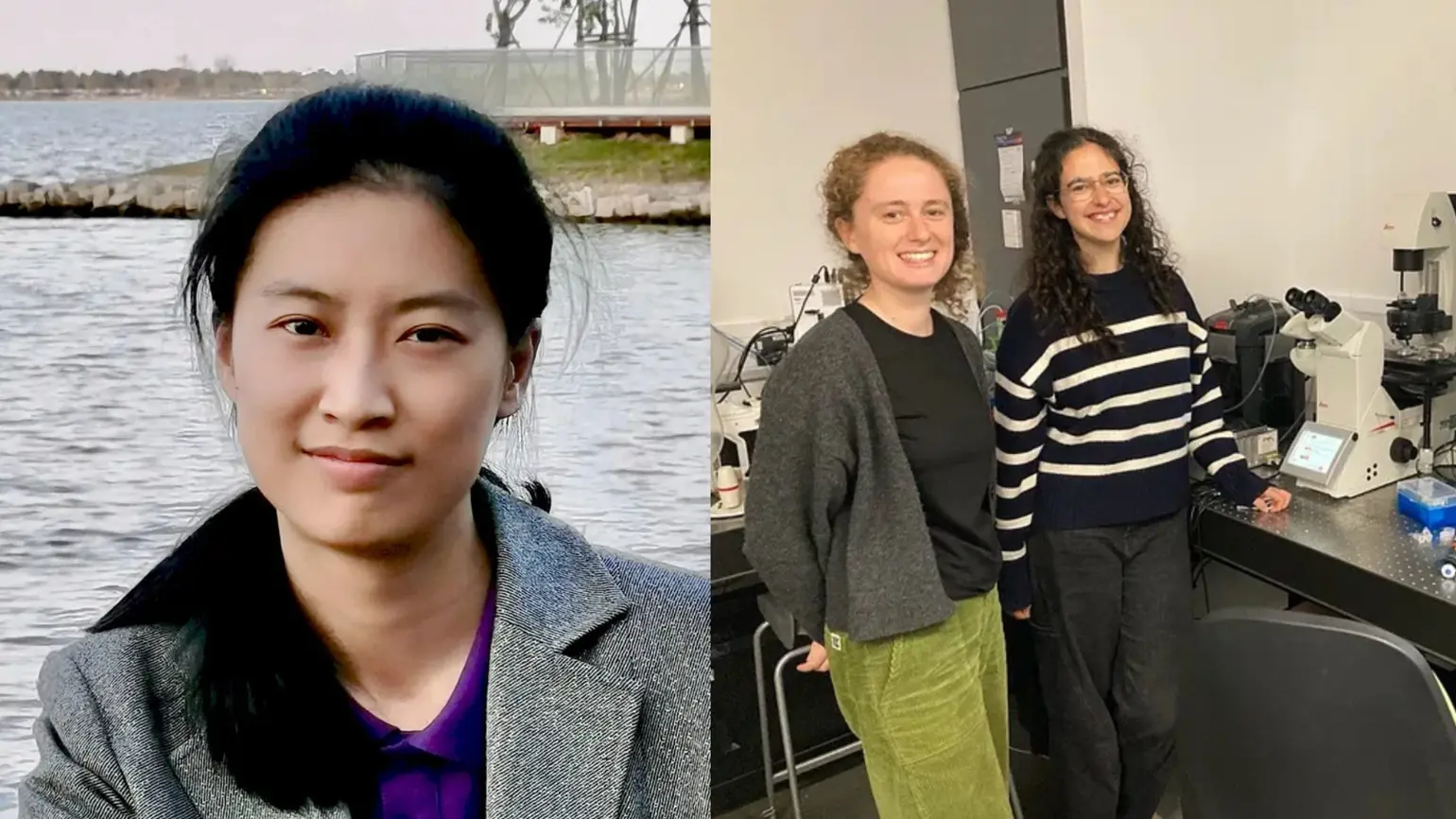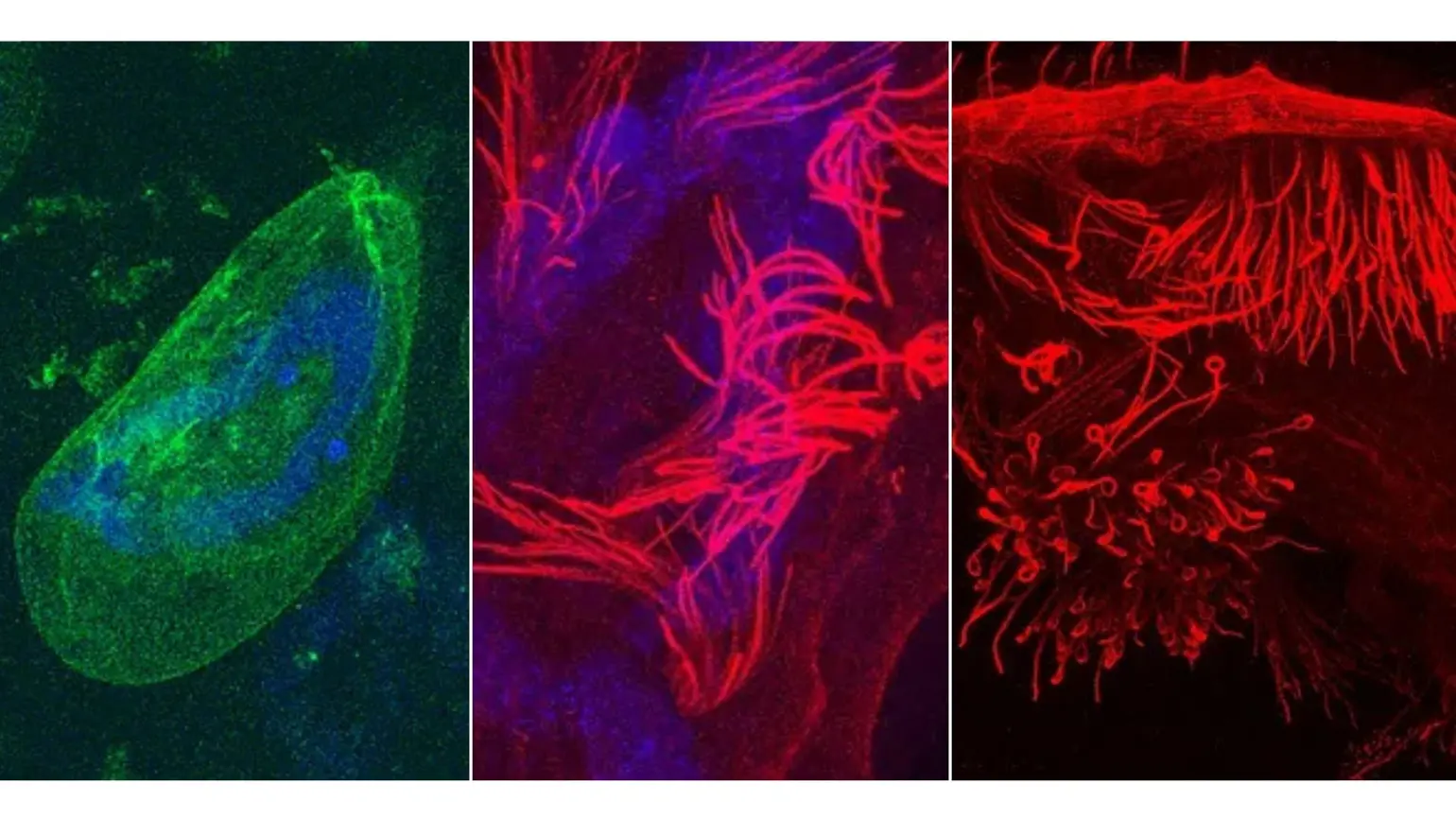25 September 2025
Natural computation in single-celled microorganisms
As a Nature Computes Better opportunity seed Creator, Kirsty Wan and her team are working to better understand single-celled microorganisms. We recently caught up with her to learn more about how her research is developing.

Left image: Kirsty Wan. Right image: Members of Kirsty’s team: Hannah Laeverenz-Schlogelhofer (left) and Lily Hartmann (right).
What are you currently working on?
My research project is devoted to understanding how complex behaviour and excitability emerge in single-celled microorganisms. What do I mean by these terms? Typically, these traits are associated with larger complex animals, for example how they make conscious choices about where to go, when to eat, when to sleep, or how to escape suddenly from unexpected predators. Yet, the tiny, microscopic critters we culture in our lab are also capable of highly sophisticated tasks - despite having no brain or neurons. Many species move and swim in response to their environment, apparently at will. The capacity to perform all these activities must therefore be entirely self-contained within the physical architecture of the cell itself.
Our goal is to understand these microscopic cellular mechanisms at a deep, mechanistic level - teasing apart the myriad subcellular structures that give rise to complex functionalities. Fascination aside, imagine the possibilities if we could harness this embodied form of natural intelligence to engineer smarter robotic bodies at the microscopic - or even macroscopic - scale?
What inspired you to work on this particular project?
Watching microorganisms move under a microscope is one of life’s simplest pleasures… In the beginning I used to look at cells swimming in a drop of water through the lens of fluid physics, wondering about the forces and mechanics that drive their movements. Increasingly, I started to think more about the cell-centric perspective – how does the cell perceive and interact with the world? There is so much more going on that we don’t understand, beyond the proverbial ‘bag of water with molecules inside’.
What do you wish more people knew about your research area?
I think it’s a genuinely fascinating and growing research area that is experiencing something of a renaissance. Modern neuroscience research has given us many insights into the formation and storage of memories, and the circuitry that encodes language, thought, and controls behaviour. Yet, understanding biological cognition from the bottom up could teach us a lot about the deepest connection between the ‘mind’ and the ‘body’ and could inspire novel designs for synthetic computational architectures (where the mind is the body).
What early findings or signals are emerging from your research so far?
Well I can’t give away too much yet! As a teaser, one thing that we have discovered is the power of expansion microscopy. It’s a conceptually simple technique that is unreasonably effective – the basic idea is that if you want to produce a more detailed picture of something tiny, you can expand your sample before imaging it! It has helped reveal the true (and surprising) extent of the structural organisation that can exist within a single cell. Examples of expansion microscopy imaging used to visualise Euplotes - another kind of single-celled organism. Credit: Hannah Laeverenz-Schlogelhofer + Kirsty Wan.
Examples of expansion microscopy imaging used to visualise Euplotes - another kind of single-celled organism. Credit: Hannah Laeverenz-Schlogelhofer + Kirsty Wan.
And finally, which book/film/tv show should people check out to understand your project or discipline more?
When I was a student, I was inspired by reading Dennis Bray’s book – ‘Wetware: A computer in every living cell’. Published a long time ago and well ahead of its time, the book foresaw the value of framing cognition and the cell as information processing systems. I remember feeling rather star-struck when he came to my poster once at a conference in Cambridge! The other piece of writing that amused me was reading translations of Antonie van Leeuwenhoek’s letters to the Royal Society, penned over 300 years ago. When speaking of ciliates and flagellates he wrote: “I discovered little paws on the foresaid oval animalcules… that was likewise furnished with little legs”.
